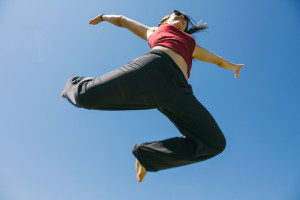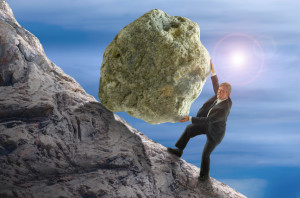 Since the discovery of neuroplasticity (the lifelong capacity of the human nervous system to regenerate and form new neural pathways), we aging Baby Boomers have been admonished to reinvent ourselves and learn new things, presumably so we will stay young forever.
Since the discovery of neuroplasticity (the lifelong capacity of the human nervous system to regenerate and form new neural pathways), we aging Baby Boomers have been admonished to reinvent ourselves and learn new things, presumably so we will stay young forever.
This is, of course, hard advice to follow. Not everyone wants to take up scuba diving or have a second career. Moreover, we are creatures of habit. And one hallmark of skilled movement is that it has become, at least in part, automatic.
The common, everyday movements we make are the hardest to change. We ascribe little significance to such habits until they are interrupted. I speak from experience. I postponed microsurgery for a herniated disk, not because I was afraid of the surgery, but because I dreaded the aftermath – six weeks of no bending, twisting, or lifting!
To prepare for these restrictions, I not only had to rearrange my home, I also had to rehearse moving in a different way. Avoiding twisting and lifting didn’t seem so hard, but no bending? How many times a day did I bend my back without even noticing?
Nevertheless, as Rudolf Laban explains, man “has the possibility and advantage of conscious training, which allows him to change and enrich his effort habits.” This kind of change can almost be thought of as a meta-effort, or what Laban calls “humane effort.” This is the effort applied to overcome habits and to develop more desirable qualities and inclinations.
Laban continues, “We are touched by the suggestion of quasi-humane efforts of devotion, sacrifice, or renunciation displayed by animals. Such may or may not have a foundation in fact. But we take it for granted that every man is able, and even almost under an obligation, to foster such kinds of effort.”
These quotes are taken from Laban’s book, The Mastery of Movement. But he is not merely discussing the mastery of movement, he is also addressing the mastery of the self. Or I should say “selves.” For our humanity rests, not only on the reiteration of an embodied identity based on effort patterns, but also on our capacity to change movement habits through humane effort, and by so doing, change ourselves.

 Effort is not only about doing; it is also about being, or what Rudolf Laban calls movement thinking. “Movement thinking could be considered as a gathering of impressions of happenings in one’s own mind, for which nomenclature is lacking. This thinking does not serve orientation in the external world but rather it perfects man’s orientation in his inner world.”
Effort is not only about doing; it is also about being, or what Rudolf Laban calls movement thinking. “Movement thinking could be considered as a gathering of impressions of happenings in one’s own mind, for which nomenclature is lacking. This thinking does not serve orientation in the external world but rather it perfects man’s orientation in his inner world.” Every voluntary human movement involves applying energy to change the position of the body. Energy can be applied in many different ways. Rudolf Laban referred to these various qualities of kinetic energy as
Every voluntary human movement involves applying energy to change the position of the body. Energy can be applied in many different ways. Rudolf Laban referred to these various qualities of kinetic energy as  Movement is good for you! Increasingly medical research is underscoring the health benefits of bodily motion. Yet this is hardly news. Prior to World War I,
Movement is good for you! Increasingly medical research is underscoring the health benefits of bodily motion. Yet this is hardly news. Prior to World War I,  Thoughts and feelings cannot be observed directly, but they can be inferred from how a particular action is performed. Laban conceived the how of human movement as
Thoughts and feelings cannot be observed directly, but they can be inferred from how a particular action is performed. Laban conceived the how of human movement as 